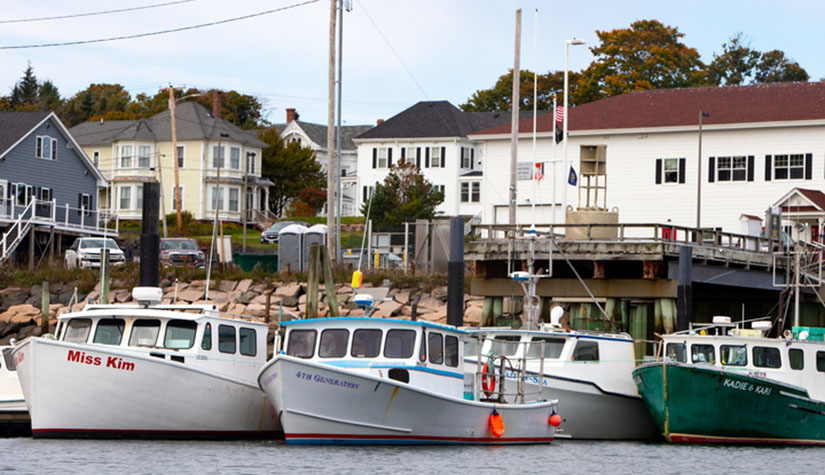Sign up for daily news updates from CleanTechnica on email. Or follow us on Google News!
The 1,300 people who call Eastport, Maine, home live in the easternmost point in the continental United States. The bridged island, connected to the mainland by a single causeway, faces powerful Atlantic Ocean winds and is susceptible to disruptive power outages. But it was not always that way.

The city was once abundant with sardine factories, supported by a diesel-fueled substation that has since closed, along with the factories. In the years since the substation went offline, power has been more unreliable, especially as storms have intensified.
“When the power in Eastport went off, you could count to 15 and this substation would power back up,” Eastport City Council Member Jeanne Peacock said. “People here were used to never being without electricity, which is kind of nice when you’re 7 miles out into the ocean and there’s a lot of wind and weather. So people would like to have that back.”
Unstable power and high energy costs were among the energy resilience challenges that brought Eastport to the Energy Transitions Initiative Partnership Project (ETIPP) in 2021. The city was among the first 11 communities in the United States to join the technical assistance program, which combines the local knowledge of regional organizations with the expertise of national laboratory researchers to strengthen energy resilience in coastal, island, and remote communities.
Eastport focused its ETIPP project on resilient power systems and energy-efficient homes, while also considering local economic opportunities and ensuring community engagement with the planning process.
With assistance from the Island Institute—the regional partner organization that supports ETIPP communities along the northeastern seaboard—and researchers at the National Renewable Energy Laboratory (NREL) and Lawrence Berkeley National Laboratory, Eastport determined a few objectives to guide its ETIPP project: learn more about microgrid options to provide back-up power; coordinate with local energy efficiency and electrification efforts; and provide educational resources to residents about the proposed microgrid.
With these community-defined objectives established, ETIPP researchers analyzed two different microgrid scenarios: a regional microgrid and a community-owned microgrid at an elementary school. According to NREL research, Maine’s tidal power is one of the strongest in the country. ETIPP researchers analyzed the potential for incorporating tidal energy and solar arrays to generate microgrid power and the battery energy storage system requirements to store this renewable energy.
When Eastport joined the ETIPP program, Ocean Renewable Power Company (ORPC), a Maine-based marine energy organization, was already looking to grow the scale of its tidal power deployment, said Suzanne MacDonald, an NREL community engagement expert based in mid-coast Maine.
“They were interested to know if the city of Eastport saw any potential benefits from tidal [energy] locally and specifically started to talk about the opportunity for a microgrid that would be powered in part by tidal power. So ORPC and Eastport were exploring these options when the ETIPP call to communities came out,” she said.
“Tidal power is constant. … Our current is going, and it’s going strong, so ideally we would have [it as] a good constant source of energy, which is very exciting,” Peacock said.
Eastport also has volatile and increasing energy prices, with utility rates that increased more than 40% from 2022 to 2023, after an 88% increase the previous year.
“We’re paying almost $0.20 per kilowatt-hour,” Peacock said. That is nearly double the national average of $0.12 per kWh in 2022, according to the U.S. Energy Information Administration.
To offer ideas for reducing residential energy costs, ETIPP researchers looked at energy efficiency opportunities at both the household and community-wide levels. They modeled the potential for energy savings in an average Eastport home if the homeowner pursued weatherization (air sealing and insulation), heat pumps, and electric vehicles. Their data also revealed that very few homes and businesses in Eastport had taken advantage of Efficiency Maine programs, which help cover the cost of energy-saving projects and equipment for Mainers of all income levels.
Researchers provided cost and savings data—along with workforce needs—to help Eastport assess the potential economic benefits for the microgrid and energy efficiency options. A microgrid could create potential job opportunities for local companies, especially if it includes a tidal-power component. Energy efficiency projects could lower a household’s energy bills by more than $3,000 per year while also making homes more comfortable and easier for older residents to age in place.
“We have a number of people on fixed incomes, so if they could get their electricity rate, that bill down, that’s just going to be such a bonus,” Peacock said.
Researchers outlined benefits, challenges, and next steps associated with each option to help Eastport in its decision-making.
“The bottom line is, what is the cost-benefit to us? How’s it affecting my pocketbook? People might be willing to [pay more for] a couple of years knowing that there’s going to be a payoff in the long run,” Peacock said.
MacDonald wanted to present the ETIPP findings in a way that clearly showed what was “actionable and implementable.”
“[NREL researcher] Becki Meadows and I talked a lot with the community about how to communicate the findings and how they could establish priorities to move the findings forward,” she said. “So we included some slides at the end of our [presentation] deck to be clear with the community that if they like these ideas, this is what’s going to be needed to move forward.”
In addition to the final findings presentation, Eastport has a relationship with the Island Institute to help them make progress on energy efficiency goals. During the ETIPP project, Island Institute had an Island Fellow, Paige Atkinson, dedicated to helping city staff engage with the broader community on energy and other infrastructure goals. Now that Eastport’s ETIPP project is completed, the Island Institute is supporting the city’s new energy committee and will use funding from the U.S. Department of Energy’s Energizing Rural Communities prize to continue supporting the installation of more renewable energy sources and a regional microgrid in Eastport.
“I think it’s a nice model in the sense that you have a partner to move through this process with, as opposed to having very small communities have to go it alone,” MacDonald said.
ETIPP is accepting applications for new communities to join the program through July 10, 2024. Visit the ETIPP application page to learn more about eligibility and apply.
ETIPP is managed by NREL and funded and supported by the U.S. Department of Energy through several of its Office of Energy Efficiency and Renewable Energy (EERE) technology offices and programs. ETIPP is sponsored and led by EERE’s Integrated Strategies Office’s Energy Transitions Initiative and supported by DOE offices including the Building Technologies Office, Geothermal Technologies Office, Solar Energy Technologies Office, Vehicle Technologies Office, Water Power Technologies Office, and Wind Energy Technologies Office.
Apply to ETIPP, applications are open until July 10, 2024.
By Brooke Van Zandt, NREL
Have a tip for CleanTechnica? Want to advertise? Want to suggest a guest for our CleanTech Talk podcast? Contact us here.
Latest CleanTechnica.TV Video
CleanTechnica uses affiliate links. See our policy here.


